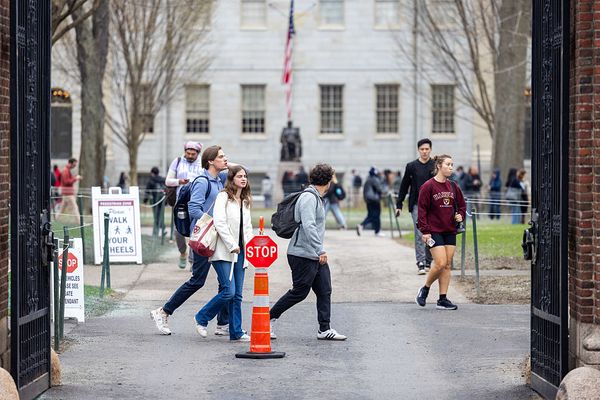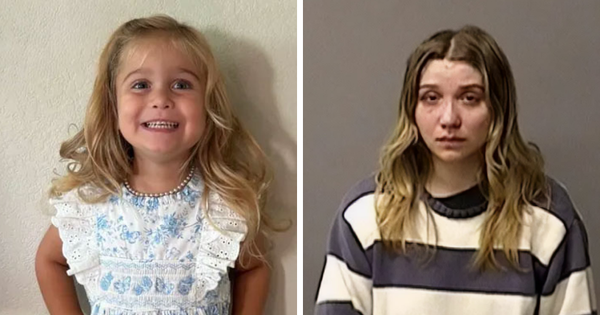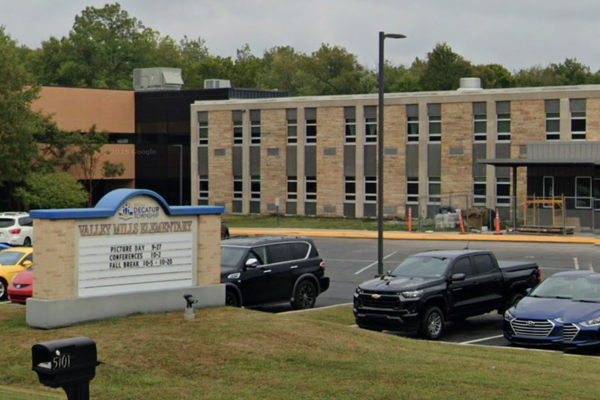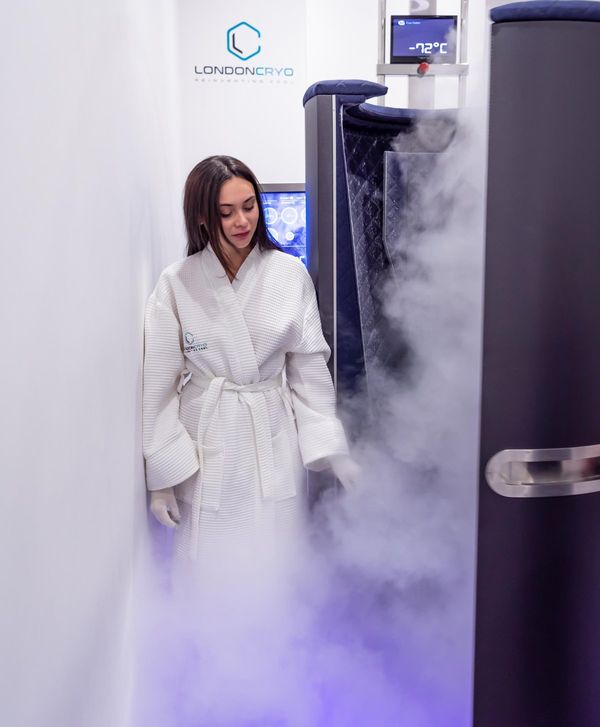
Last year’s New Contemporaries, the annual show that selects and showcases “early career artists”, was so navel-gazing that I couldn’t bear to review it. So it is a joyful relief to enter this exhibition and find so much art that works directly on the senses. To mark its 75th anniversary, it takes place at the ICA where it was staged from the 1960s to the 80s. And boy, does the ICA need the lift. This arts centre on the Mall was once at the heart of London’s cultural life but now rarely has an exhibition worth seeing. It is an atmospheric venue for this show, with its long, noble history of staging the new, as if the ghost of Richard Hamilton were here to greet a rising art generation.
One miraculous work lifts the entire exhibition. Hazel O’Sullivan’s Sidhe is a truly original and daunting painting whose lurid pink and red colours, elaborate false perspectives and rounded forms combine abstract mystery and uncanny precision – a hardness that held me captivated.
O’Sullivan does something new with the language of painting. She is fascinated by perspective, devising odd boxes and recesses in convincing, mathematical depth, but like MC Escher, she uses the power of illusion to lead you into a visual and mental trap. The flat surface of the painting offers the deceptive depth of perspective, then pushes you back again.
The exhibition leaflet says it is a “portal”. If so, it is a gateway in a story by Kafka, offering a world beyond, but refusing you access. It could also be a self-portrait of someone longing to communicate, then refusing to. Yet it is definitely religious in feel: the arch at the top and the trompe l’oeil tricks could be from a Renaissance altarpiece. Irish spirituality or magic is there, too, as she summons the mind-boggling visual wonderland of the Book of Kells. Yet for all the ancient echoes, this is something utterly, scarily new.
I want it. O’Sullivan, who also sculpts, is one to covet. If I were a wealthy art collector, I would snap up everything in her studio. Sidhe alone made my visit to New Contemporaries worthwhile, which surely is what the show is for – spotting tomorrow’s stars.
The big downstairs gallery is dominated by two spectacular sculptures. Beverley Duckworth’s Residue is a heap of matter that cascades from a window on to the gallery floor. On closer inspection, it turns out to be a mound of old clothes on which tiny green seedlings are growing. How “new” is this? Residue echoes established classics of contemporary art from Italian arte povera to the “formless” sculptural mounds of Lynda Benglis, but with a lot of aplomb.
Valentino Vannini’s ANON – DTF faces Duckworth’s mound with a row of concrete phalluses. That’s not just me, for we are told that it references gay cruising, and the materials listed include “petroleum jelly, lube”. Yet Vannini’s jagged, rocky columns also suggest undersea growths or eroded geological formations, even stone age megaliths. Again, I didn’t feel I was seeing the shock of the new, but very promising student work. These sculptors are definitely doing what sculptors ought to do. They may eventually do it in a more revelatory way.
I was more absorbed, however, by a much less arty work. In fact, I don’t know what makes Yang Zou’s video I Love You, Life, I Hope it’s Great Again visual art at all, except it is in a gallery. But it sucks you into the contemporary world like nothing else here. It is a video diary of a journey through Russia on the Trans-Siberian railway, ending in Moscow: a quest to meet and understand the Russians. Victor, a fellow passenger, has tattoos that he politely refuses to explain. We gradually realise they are criminal gang markings. The train staff pose for the camera and an elderly babushka insists on feeding the artist, who communicates with them all using a translation app on his phone.
We are taken, apparently uncritically, deep inside Putin’s Russia to meet its people at a time when the invasion of Ukraine makes this vast nation taboo for most of us. Is the artist fooled? No. By playing the naive tourist, he shows us the poverty and misery of ordinary Russian lives. It seems nothing much has changed since the fall of the USSR, whose bizarre modernist architecture haunts the film.
Yang Zou is a student at the Royal College of Art. Before enrolling in its photography MA, he worked as a cultural journalist. His piece is quite brilliant cultural journalism and made the other video art here seem contrived and conventional – although I have never seen a Muppet version of Pier Paolo Pasolini before. Similarly, O’Sullivan’s eerily impeccable painting makes other paintings in the upstairs galleries look less original.
Still, there is skill and humour here and nothing in the exhibition made me cringe. A show full of youthful promise and a couple of inspired stars – what more can you want from New Contemporaries?
• New Contemporaries is at the ICA, London, until 23 March







